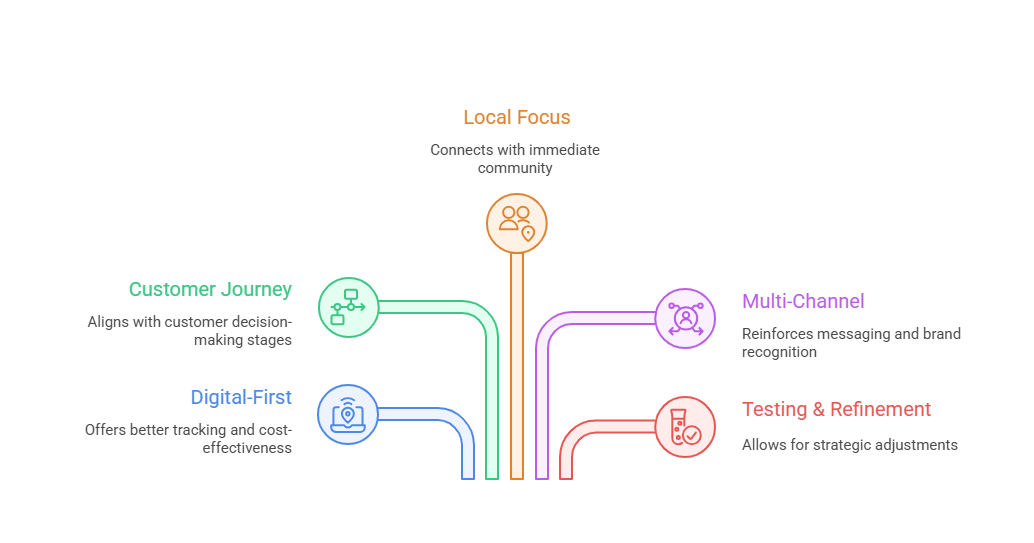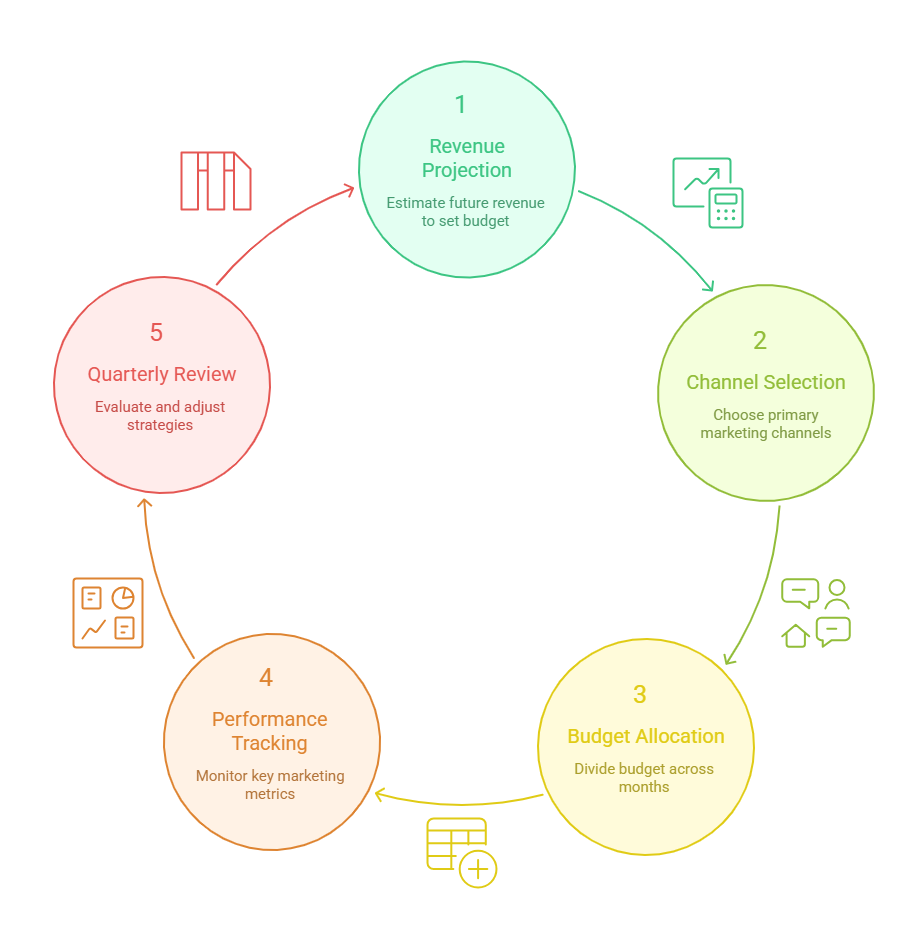Smart Marketing Budget Planning Strategies for Small Business Owners
Marketing budget planning for small business owners has become increasingly critical as economic uncertainties continue to shape the business landscape. Despite financial challenges, nearly half of small businesses are planning to increase their marketing budgets in 2025, recognizing that strategic marketing investment can drive growth and maintain competitiveness.
This shift represents a proactive approach to business growth, where owners understand that effective marketing budget planning isn't just about spending money, it's about making every dollar count. With marketing budgets typically representing around 7.7% of total company revenue, small business owners need to maximize their return on investment through careful channel prioritization and strategic ad spend allocation.
The key lies in developing data-driven strategies that optimize campaign performance while ensuring sustainable growth. Let's explore how smart marketing budget planning can transform your business outcomes in today's competitive marketplace.
Essential Elements of Marketing Budget Planning
Marketing budget planning for small business owners requires understanding several fundamental components that form the foundation of successful campaigns. These elements work together to create a comprehensive approach to marketing investment.
- Revenue percentage allocation: Industry data suggests that marketing budgets typically remain steady at 7.7% of total company revenue, providing a baseline for planning your investment levels
- Market research integration: Understanding your target audience and competitive landscape helps inform where to allocate resources most effectively
- Seasonal considerations: Planning for peak and slow periods ensures consistent marketing presence throughout the year
- Growth stage alignment: Your business's current phase determines whether to focus on awareness, conversion, or retention strategies
- Cash flow management: Balancing marketing investment with operational needs prevents financial strain while maintaining growth momentum
Channel Prioritization Strategies That Drive Results

Effective channel prioritization helps small business owners focus their marketing efforts where they're most likely to generate meaningful returns. The key is identifying which channels align best with your audience and business objectives.
- Digital-first approach: Online channels often provide better tracking capabilities and cost-effectiveness compared to traditional marketing methods
- Customer journey mapping: Understanding where your customers discover, research, and purchase helps prioritize channels that influence decision-making
- Local market focus: Small businesses typically benefit from prioritizing channels that connect with their immediate geographic area and community
- Multi-channel integration: Coordinating efforts across selected channels creates reinforced messaging and improved brand recognition
- Testing and refinement: Regular evaluation of channel performance allows for strategic adjustments and better resource allocation
Smart Ad Spend Allocation Techniques
Ad spend allocation requires careful consideration of multiple factors to ensure maximum impact from your marketing investment. Strategic distribution of funds across different campaigns and platforms can significantly improve overall performance.
- Performance-based distribution: Allocating larger portions of budget to channels and campaigns that consistently demonstrate strong ROI optimization results
- Testing budget reserves: Setting aside 10-20% of ad spend for experimenting with new channels, audiences, or creative approaches
- Seasonal adjustment planning: Increasing allocation during peak business periods while maintaining baseline presence during slower times
- Audience segmentation focus: Distributing spend based on the lifetime value and conversion potential of different customer segments
- Geographic targeting precision: Concentrating ad spend in areas where your business has the strongest presence or highest growth potential
ROI Optimization and Campaign Performance Tracking
ROI optimization forms the cornerstone of successful marketing budget planning for small business owners. Without proper tracking and analysis, it's impossible to know which efforts drive meaningful business results.
- Clear metric definition: Establishing specific, measurable goals for each campaign ensures accurate performance evaluation and decision-making
- Cost per acquisition focus: Tracking how much it costs to acquire new customers through different channels helps optimize budget allocation
- Lifetime value consideration: Understanding customer lifetime value helps justify higher acquisition costs for valuable customer segments
- Attribution modeling: Implementing systems to track customer touchpoints provides insights into which channels contribute to conversions
- Regular performance reviews: Conducting monthly or quarterly assessments allows for timely adjustments and improved campaign performance
Building Your 2025 Marketing Budget Action Plan

Creating a practical marketing budget action plan transforms strategic thinking into executable steps. This systematic approach helps small business owners implement effective marketing budget planning while maintaining flexibility for adjustments.
- Revenue projection and budget calculation: Estimate your expected revenue for 2025 and calculate your marketing budget using the industry benchmark of 7.7% as a starting point, adjusting based on your growth goals and market conditions
- Channel research and selection: Research which marketing channels your target customers use most frequently, then select 3-4 primary channels to focus your efforts rather than spreading resources too thin
- Monthly allocation and scheduling: Divide your annual budget by month, accounting for seasonal variations and planned promotions, while reserving 15% for unexpected opportunities or market changes
- Performance tracking system setup: Implement tools and processes to monitor key metrics like cost per acquisition, conversion rates, and return on ad spend across all selected channels
- Quarterly review and optimization schedule: Plan regular assessment periods to evaluate campaign performance, reallocate resources to top-performing channels, and adjust strategies based on market feedback
Effective marketing budget planning for small business owners isn't just about setting aside money for advertising. It's about creating a strategic framework that aligns your marketing investment with business goals while maintaining the flexibility to adapt to changing market conditions.
The data shows that businesses taking a proactive approach to marketing investment, even during uncertain times, position themselves for stronger growth and competitive advantage. By focusing on channel prioritization, smart ad spend allocation, and continuous ROI optimization, you can ensure every marketing dollar works harder for your business.
Remember that successful marketing budget planning is an ongoing process, not a one-time decision. Regular review and adjustment of your strategies, combined with careful tracking of campaign performance, will help you build a marketing program that drives sustainable business growth throughout 2025 and beyond.

.png)





